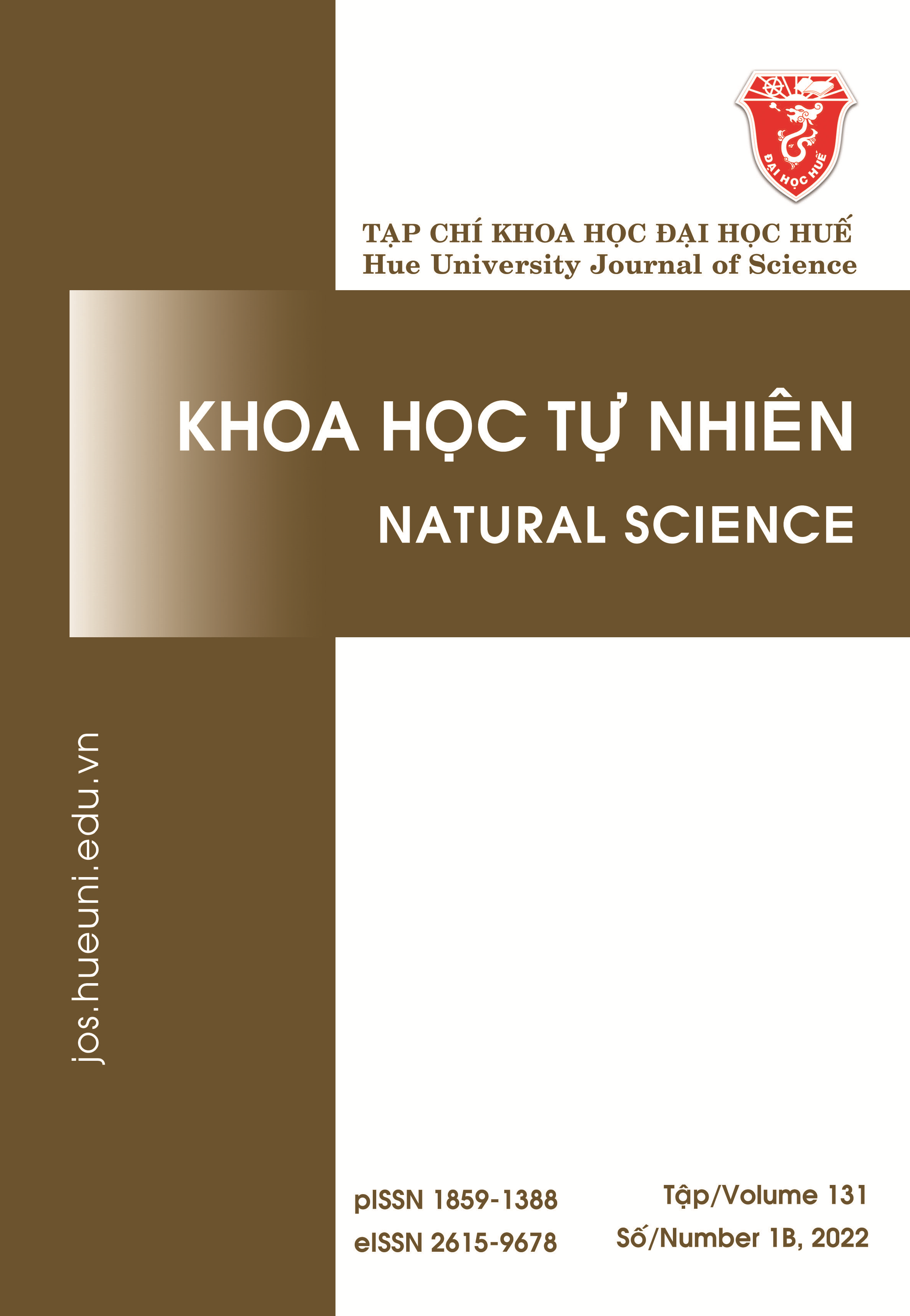Abstract
In this report, silicon quantum dots (SiQDs) with the NH2 functional group were synthesized with the hydrothermal method. The as-prepared SiQDs exhibit a strong fluorescence emission peak at 441 nm when excited at 355 nm and are effectively quenched upon adding Cr6+ ions. Hence, SiQDs were used as an optical probe to detect Cr6+ ions in solutions. The crystal structure of SiQDs was characterized by using X-ray diffraction (XRD). The Fourier-transform infrared spectroscopy (FT-IR) was used to determine the linker groups on the SiQDs surface. The fluorescence spectroscopic technique with an excitation wavelength of 355 nm was used to quantify the Cr6+ ion concentration in the solutions in the range of 0.1–1000 µM. Competition from common coexisting ions, such as K+, Na+, Al3+, Zn2+, and Pb2+, was ignorable. The test with actual samples showed good linearity for the Cr6+ concentration range of 0.1–50 µM.
References
- Dupont L, Guillon E. Removal of hexavalent chromium with a lignocellulosic substrate extracted from wheat bran. Environ Sci Technol. 2003;37:4235-41.
- Fendorf SE. Surface reactions of chromium in soils and waters. Geoderma. 1995;67:55-71.
- Pechova A, Pavlata L. Chromium as an essential nutrient: A review. Vet Med (Praha). 2007;52:1-18.
- Costa M. Potential hazards of hexavalent chromate in our drinking water. Toxicol Appl Pharmacol. 2003;188:1-5.
- Onchoke KK, Sasu SA. Determination of Hexavalent Chromium (Cr(VI)) Concentrations via Ion Chromatography and UV-Vis Spectrophotometry in Samples Collected from Nacogdoches Wastewater Treatment Plant, East Texas (USA). Adv Environ Chem. 2016;2016:1-10.
- 6. Shrivastava R, Upreti RK, Chaturvedi UC. Various cells of the immune system and intestine differ in their capacity to reduce hexavalent chromium. FEMS Immunol Med Microbiol. 2003;38:65-70.
- Flury B, Eggenberger U, Mäder U. First results of operating and monitoring an innovative design of a permeable reactive barrier for the remediation of chromate contaminated groundwater. Appl Geochemistry. 2009;24:687-96.
- Ragosta M, Caggiano R, D’Emilio M, Macchiato M. Source origin and parameters influencing levels of heavy metals in TSP, in an industrial background area of Southern Italy. Atmos Environ. 2002;36:3071-87.
- Zazo JA, Paull JS, Jaffe PR. Influence of plants on the reduction of hexavalent chromium in wetland sediments. Environ Pollut 2008;156:29-35.
- Resch-Genger U, Grabolle M, Cavaliere-Jaricot S, Nitschke R, Nann T. Quantum dots versus organic dyes as fluorescent labels. Nat Methods. 2008;5:763–75.
- Lewinski N, Colvin V, Drezek R. Cytotoxicity of nanopartides. Small. 2008;4:26-49.
- Cheng X, McVey BFP, Robinson AB, Longatte G, O’Mara PB, Tan VTG, et al. Colloidal silicon quantum dots: from preparation to the modification of self-assembled monolayers for bioimaging and sensing applications. Colloid Nanoparticles Biomed Appl XII. 2017;10078: 100780O.
- Phan LMT, Baek SH, Nguyen TP, Park KY, Ha S, Rafique R, et al. Synthesis of fluorescent silicon quantum dots for ultra-rapid and selective sensing of Cr(VI) ion and biomonitoring of cancer cells. Mater Sci Eng C. 2018;93:429-36.
- Terada S, Xin Y, Saitow KI. Cost-Effective Synthesis of Silicon Quantum Dots. Chem Mater. 2020;32:8382-92.
- Wang X, Yang Y, Huo D, Ji Z, Ma Y, Yang M, et al. A turn-on fluorescent nanoprobe based on N-doped silicon quantum dots for rapid determination of glyphosate. Microchim Acta. 2020; 187.
- Holmes JD, Ziegler KJ, Doty RC, Pell LE, Johnston KP, Korgel BA. Highly luminescent silicon nanocrystals with discrete optical transitions. J Am Chem Soc. 2001;123:3743-8.

This work is licensed under a Creative Commons Attribution-ShareAlike 4.0 International License.
Copyright (c) 2021 Array




